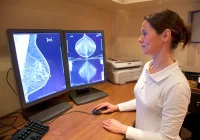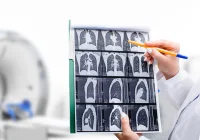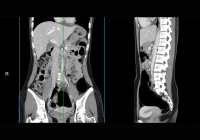The integration of artificial intelligence into radiological workflows has introduced significant possibilities for enhancing diagnostic accuracy. Yet, a persistent challenge remains in the form of perceptual errors—missed or misinterpreted abnormalities that occur during visual interpretation of chest radiographs. Addressing these human oversights requires more than standalone algorithms; it calls for systems that collaborate with clinicians to reinforce decision-making. To meet this need, a collaborative AI solution named Collaborative Radiology Expert (CoRaX) was developed. By integrating radiology reports, eye gaze data and multimodal AI modelling, CoRaX aims to correct perceptual errors and improve chest radiograph interpretation outcomes.
System Design and Methodology
CoRaX was constructed as a post-interpretation tool to act like a virtual second reader, aiding radiologists by identifying diagnostic oversights. The system integrates three data types: chest X-ray (CXR) images, radiology reports and eye gaze recordings. Its architecture comprises two primary modules: the Missed Abnormality Finder (MAF) and the Spatio-Temporal Abnormal Region Extractor (STARE). The MAF uses a transformer-based classifier (ChexFormer) and a rule-based NLP tool (Chexpert Labeler) to generate corrected radiology reports by detecting missing abnormalities. The STARE module then processes both eye gaze video and these corrected reports to localise the likely regions of missed findings.
The system was trained and evaluated using two publicly available datasets—REFLACX and EGD-CXR—which included synchronised radiologist eye-tracking and radiology reports. As real-world datasets with confirmed perceptual errors are unavailable, the researchers created two simulated error datasets by introducing errors through random masking and uncertainty-based masking of specific abnormalities. These errors targeted five conditions: cardiomegaly, pleural effusion, atelectasis, lung opacity and oedema. The goal was to test CoRaX's performance in realistic diagnostic scenarios.
Performance Evaluation and Findings
The CoRaX system was evaluated on two fronts: its ability to correct perceptual errors and the quality of its interaction with radiologists. In the dataset using random masking, CoRaX corrected 21.3% of the altered abnormalities, while in the uncertainty-based masking dataset, it corrected 34.6%. Cardiomegaly emerged as the most readily identified abnormality, likely due to its defined anatomical location. In contrast, abnormalities with more variable locations, such as lung opacity or oedema, posed greater challenges.
Must Read: Optimising Chest Imaging: Evaluating Digitally Reconstructed Radiographs
Further analysis of spatial precision used the Interpretable Referral Accuracy (IRA), which measured how well the predicted regions matched the actual missed areas. In the random masking dataset, the average IRA was 63.0%, and in the uncertainty masking dataset, it was 58.0%. The highest IRA was again observed in cardiomegaly cases, demonstrating the model’s capability to assist radiologists in recognising key diagnostic cues.
Evaluation of system–radiologist interaction used metrics like the Interaction Score, which assesses both the usefulness and accuracy of referrals. CoRaX achieved non-zero interaction scores in 85.7% of random-masking and 78.4% of uncertainty-masking interactions, suggesting that its assistance was frequently valuable. These results also revealed a balance between aiding diagnosis and avoiding unnecessary referrals, as reflected in low overdiagnosis error rates.
Implications and Future Directions
The findings underscore the potential of collaborative AI systems to address a critical gap in radiology: perceptual error mitigation. Unlike fully autonomous AI solutions that may be met with scepticism or misapplied trust, CoRaX reinforces the human-AI partnership by tailoring its recommendations based on individual gaze behaviour and report content. This makes it particularly suitable not only for improving daily diagnostic workflows but also for training radiologists by highlighting visual oversight patterns.
Nonetheless, the approach has limitations. The simulated errors may not fully replicate the complexity of clinical misinterpretations, and some discrepancies in gaze-report alignment could affect region predictions. Real-world validation in clinical settings remains necessary to confirm generalisability. Still, the modular design of CoRaX allows for future improvements, such as substituting the ChexFormer with more advanced classifiers or refining STARE’s alignment mechanisms. The framework also offers a foundation for broader adoption in educational contexts and clinical trials aimed at improving radiological practice.
By combining radiological expertise, eye-tracking data and multimodal AI analysis, CoRaX presents a compelling model for reducing perceptual errors in chest radiography. Its capacity to identify missed abnormalities, offer spatially grounded feedback and support radiologists in real-time interactions demonstrates the benefits of collaborative intelligence in clinical imaging.
Source: Radiology: Artificial Intelligence
Image Credit: iStock










